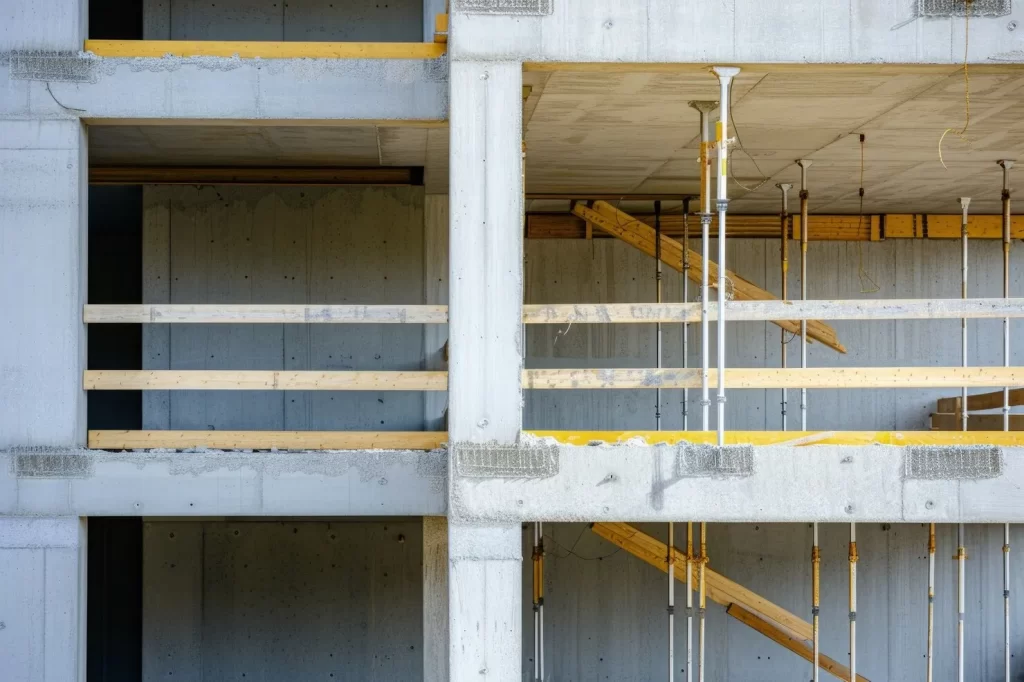In construction, safety and stability are essential during structural work. That’s where shoring comes in—a technique that provides crucial support on a temporary or ongoing basis. Whether you’re familiar with shoring or not, understanding its methods and best practices is key to ensuring the success of a project. Let’s go into the different types of shoring systems and the factors to consider for proper installation.
Understanding Shoring in Construction
Shoring involves using temporary structures to stabilize areas during excavation or construction. Key benefits include:
- Preventing soil and structural collapses
- Protecting workers and surrounding assets
- Creating safe access points for workers to address structural issues directly
- Minimizing delays and ensuring regulatory compliance
Successful shoring requires careful planning, load analysis and an understanding of soil behavior by construction experts.
Types of Shoring Methods
Different shoring techniques are designed to address specific site conditions and industry needs. Shoring plays a crucial role in excavation projects in particular.
Let’s explore some of the most common shoring methods used in the field.
Hydraulic Shoring
Hydraulic cylinders are used to enable quick adjustments and adaptability for various trench wall sizes. Steel plates are often used in conjunction with them to prevent damage.
Common Use Case: Trench and excavation support (especially in urban environments or areas with unstable soil).
Sheet Pile Shoring
Interlocking, u-shaped steel sheets are driven into the ground to create a barrier—commonly to separate project soil from a body of water.
Common Use Case: Harbor and marine construction
H and I-Beam Shoring
Also known as soldier pile walls, H or I-shaped steel beams are driven into the ground to provide strength and durability.
Common Use Case: Trench and excavation walls
Soil Nails Shoring
Steel rods are inserted into pre-drilled holes in the ground to offer stability, often in conjunction with other support systems. They are usually permanently left in and angled downward to improve soil density.
Common Use Case: Unstable and steep terrain where conventional retaining structures are not possible.
Diaphragm Wall Shoring
Reinforced concrete walls are constructed in deep excavations to provide structural support where space is limited.
Common Use Case: Tunnel construction
Contiguous Pile Shoring
Walls are created with closely spaced piles (about 2-6 inches in distance from one another).
Common Use Case: Deep excavations with limited space and ground disturbance requirements.
Secant Pile Shoring
Interlocking walls are created by connecting a row of un-reinforced piles to a row of reinforced piles.
Common Use Case: Deep excavations where space is tight or two structures are close to one another.
Raking Shoring
Angled supports (i.e., rakers) that are attached to unstable walls to provide lateral stability and prevent collapses. These can be further supported by being attached to steel wall plates.
Common Use Case: Trench and excavation walls
Flying Shoring
Horizontal beams are set up and supported by vertical posts to aid the stability of two parallel walls or aid with the tearing down of an adjacent structure.
Common Use Case: High-rise buildings
Dead Shoring
Two vertical beams connected by a horizontal beam are placed directly under a structure to provide support for the entirety of its weight.
Common Use Case: Historical building renovations

Factors to Consider When Installing Shores
There are key considerations for all types of shoring construction, including:
Soil Type and Conditions
Soil type and consistency determine the best shoring method. Sandy soils, for example, might require sheet piling, while hydraulic shoring may be best for clay-based soils.
Load-Bearing Requirements
You must choose a shoring system that can handle structural loads and any additional forces, like wind or traffic.
Environmental Impact
Your shoring method should minimize disruption to the surrounding environment and adhere to environmental regulations.
Safety Regulations and Compliance
Adhering to safety regulations in shoring projects is crucial for protecting workers, the public and structural integrity. This includes following OSHA standards, site-specific safety plans and regular inspections while ensuring workers are properly trained and certified.
Steps in the Shoring Process
The shoring process typically follows this pattern:
- Planning and Design: This includes assessing the site, choosing the right shoring method and creating a detailed plan.
- Installation: The selected shoring system must be carefully positioned based on the planned design.
- Monitoring and Maintenance of Shoring Structures: Regular inspections and adjustments can ensure the shoring remains effective. Any removal work should only occur when it’s confirmed that the structure is self-supporting.
Ensure Safe, Effective Shoring With Northern Construction
Looking for expert shoring solutions for your next project? Northern Construction offers the experience, equipment and knowledge to match the right shoring technique with your specific needs. Contact us today for more information and a project quote!
Frequently Asked Questions (FAQs)
Shoring on a construction site involves using structures to stabilize soil or existing buildings during excavation or construction, ensuring safety and efficiency.
Hydraulic and sheet pile shoring are among the most common methods due to their versatility in various projects, from urban excavations to waterfront developments.
Shoring supports structures and soil during construction and scaffolding provides temporary platforms for workers.
